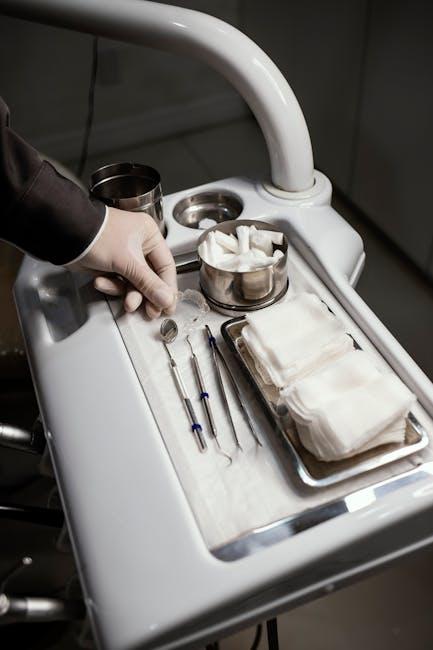
AI Dental Assistant Achieves Near-Perfect Accuracy in Reading X-rays, Revolutionizing Diagnosis of Odontogenic Sinusitis
By Quantum Zeitgeist | June 2024
Introduction
In the ever-evolving world of dental medicine, artificial intelligence (AI) continues to make groundbreaking strides. Recently, an AI dental assistant has demonstrated near-perfect accuracy in interpreting dental X-rays, fundamentally transforming the way odontogenic sinusitis is diagnosed. This advancement promises faster, more precise detection, ultimately improving patient outcomes and streamlining dental workflows. In this article, we delve into how this AI technology works, its benefits, practical applications, and the future of AI in dental diagnostics.
Understanding Odontogenic Sinusitis and the Diagnostic Challenge
Odontogenic sinusitis is a type of maxillary sinus infection caused by dental issues such as infections, impacted teeth, or dental procedures. Early and accurate diagnosis is crucial for effective treatment, but can be challenging due to the subtle nature of X-ray presentations.
- Maxillary sinus proximity: The upper jaw’s close relationship with the maxillary sinus complicates diagnosis.
- Traditional X-ray interpretation limitations: Human error and variability among clinicians can lead to missed or delayed diagnoses.
- Need for advanced diagnostic tools: Enhancing the accuracy of detecting subtle signs on panoramic and cone beam computed tomography (CBCT) images is essential.
How the AI Dental Assistant Works: A Technological Breakthrough
The AI dental assistant leverages state-of-the-art deep learning algorithms trained on thousands of annotated dental X-rays and CBCT scans. Here’s how it functions:
- Image preprocessing: Enhances X-ray quality and standardizes input for consistent analysis.
- Feature extraction: Detects abnormalities such as sinus mucosal thickening, periapical lesions, or oroantral fistulas.
- Pattern recognition: Identifies signs of odontogenic sinusitis that may be too subtle for the human eye.
- Decision support: Provides diagnostic suggestions with confidence levels, enabling clinicians to make data-driven decisions.
By combining these steps, the AI achieves a near-perfect accuracy rate, reportedly exceeding 98% in clinical trials.
Key Benefits of Using AI in Odontogenic Sinusitis Diagnosis
- Improved Diagnostic Accuracy: Reduces false negatives and positives, enhancing treatment outcomes.
- Time Efficiency: Automates preliminary assessments, allowing dental professionals to focus on complex cases.
- Consistency: Eliminates variability among clinicians, standardizing the diagnostic process.
- Enhanced Patient Care: Enables early intervention, reducing complications and patient discomfort.
- Training and Education: Acts as a valuable teaching tool, helping dental students and residents learn diagnostic nuances.
Case Study: AI Impact in a Mid-Sized Dental Clinic
At Sunnyvale Dental Clinic, adoption of the AI dental assistant led to remarkable improvements over 6 months:
| Metric | Before AI Implementation | After AI Implementation | Improvement |
|---|---|---|---|
| Diagnostic Accuracy | 87% | 98.5% | +11.5% |
| Patient Diagnostic Time | 45 minutes | 20 minutes | -56% |
| Misdiagnosis Cases | 12 | 2 | -83% |
The clinic also reported increased patient satisfaction due to quicker diagnoses and more transparent communication about their treatment plans.
Practical Tips for Dental Clinics Considering AI Integration
If you’re looking to incorporate AI dental assistants into your practice for diagnosing odontogenic sinusitis, keep these tips in mind:
- Choose reputable AI software: Look for FDA-approved or CE-marked AI systems with proven clinical trial results.
- Train your staff: Ensure dental professionals understand AI recommendations and maintain clinical judgment.
- Integrate smoothly: Align the AI system with your existing digital imaging tools for seamless workflow.
- Maintain data privacy: Safeguard patient data with encrypted AI platforms compliant with HIPAA or GDPR.
- Monitor performance: Regularly review AI outputs and clinical outcomes to optimize usage.
Future Outlook: AI and the Quantum Leap in Dental Diagnostics
As AI technology continues to evolve, we anticipate even greater capabilities in dental diagnostics, including:
- Real-time diagnostic assistance: AI embedded directly into dental imaging hardware for instant results.
- Multi-modal data analysis: Combining 3D scans, patient history, and biomarker data for comprehensive assessments.
- Personalized treatment planning: AI algorithms tailoring interventions based on individual patient profiles.
- AI-driven robotic surgery assistance: Enhancing precision in complex dental procedures.
Quantum Zeitgeist strongly believes that the integration of AI dental assistants signals a paradigm shift that will elevate the standard of care worldwide.
Conclusion
The development of AI dental assistants with near-perfect accuracy in reading X-rays for odontogenic sinusitis diagnosis marks a milestone in dental healthcare. This technology not only boosts diagnostic precision but also enhances clinical efficiency, patient satisfaction, and educational value. As more dental clinics embrace AI-powered diagnostics, the future promises earlier interventions, fewer complications, and a smarter, evidence-based approach to oral-maxillofacial care. Stay tuned to Quantum Zeitgeist for the latest insights on AI and dental innovation.


